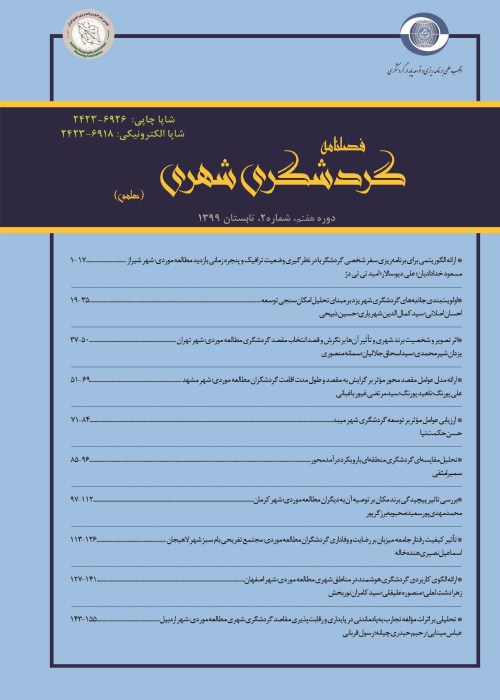Co-creating a smart tourism space through digital interactions: Proposing a conceptual model of Cyberpark
Today, most resources around the world are consumed in cities with high economic importance and poor environmental performance. Global carbon dioxide emissions, largely due to urban growth and a major contributor to climate change, have increased by 45% over the 20-year period (1990 to 2010). The environmental problems and urban sprawl emphasize the importance of new sustainable solutions in communities. It requires the development of Smart urban spaces that provides the necessary platform to reach the sustainable city. Due to the rapid and pervasive development of digital and mobile technologies, the everyday life of people has been profoundly influenced in urban communities and the behavior and interests has been changed.
Due to the novelty of the concept of cyber park and the newness of ongoing cyber park projects in different parts of the world, in this research, an attempt has been made to take advantage of the features of the content analysis method, accurate and systematic analysis of research and actions taken. In this regard, while extracting and developing concepts related to cyber park, a summary of research findings in the form of a cyber park conceptual model is presented. In this way, based on the researches and actions performed and the analyzes performed during the research stages, the main functional areas are identified and extracted. In the continuation of the research, in one stage, the content and components of each functional area are categorized and presented separately, and in the next stage, through analysis and comparison, the interactions and interactions of different functional areas are determined. Finally, the activities that can be formed in cyberspace are explained. These activities arise from the interactions of three functional areas, including influencers and tourists, urban tourism spaces, and information and communication technology.
Cyberpark is being developed via the co-creation approach through digital interactions and built environment. So consecrating both virtual systems and real systems in nature, Cyberpark can establish a balance between digital and human life. A world of intelligent environments where sensors and computers are seamlessly embedded to enhance ordinary park activities, places where the landscape itself might respond to people moving through it. Tourism development relies on good public infrastructure. Cyberpark can influence public policy for infrastructure upgrade, making them more sustainable, innovative and resource-efficient and moving towards low carbon growth, thus attracting tourists and other sources of foreign investment. This Cyber-physical system allows tourists to exchange information, share knowledge, experiences, and transfer technology and innovation as drivers of future growth. Due to the new concept of Cyberpark and emerging similar innovations offering new forms for the future, this research supports a wide range of assumption, theoretical background, and previous technical approaches to analysis “smart UPS”, “smart torism” “ICT”, and digital interactions of people in urban socio-cultural environment, and attempts to develop the “conceptual model of Cyberpark”. The aim of Cyberpark is to use ICT Through co-creation to improve the values of public and tourism spaces and extensively the functions of them from different aspects.
The findings of this study indicate that Cyberparks are known to have three main functional areas includes: stakeholders and tourists, urban tourism spaces, and ICT. It consequently explains that how people and tourist experience the city, appreciate the environment, along with the way they interrelate to each other and with the urban space. The interaction of the activities in this cyber-physical context is beneficial for the environment, and should be the basis of development that would make cities more attractive places for living, visiting and working, since it is people who bring life to public spaces.
- حق عضویت دریافتی صرف حمایت از نشریات عضو و نگهداری، تکمیل و توسعه مگیران میشود.
- پرداخت حق اشتراک و دانلود مقالات اجازه بازنشر آن در سایر رسانههای چاپی و دیجیتال را به کاربر نمیدهد.



